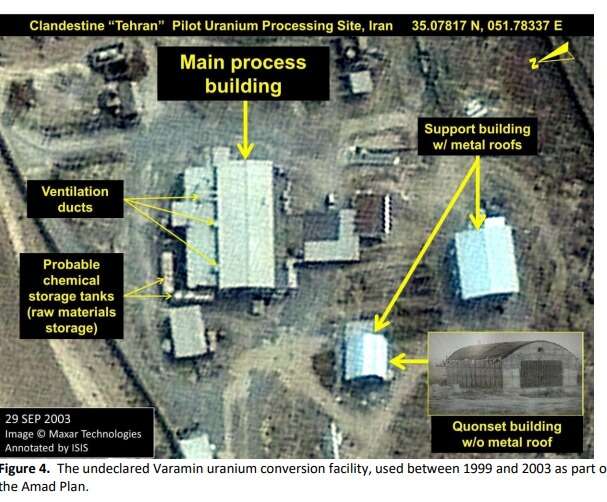Iran announced Monday that it would soon deliver a "counterproposal" to the American nuclear demands, as the International Atomic Energy Agency's (IAEA) 35-nation board of governors met in Vienna to discuss a severe report on Iran's secret nuclear activities. The board may ultimately trigger the snapback mechanism.
Iranian Foreign Ministry spokesman Esmail Bagheri said Tehran considers the US proposal presented in late May "unacceptable." According to Reuters, an Iranian diplomat explained that the American proposal failed to resolve key disagreements over uranium enrichment on Iranian soil, the transfer of Iran's stockpile of highly enriched uranium abroad, and steps toward lifting US sanctions.

"The American proposal is not acceptable to us. It does not reflect the outcomes of previous negotiation rounds. We will present our own proposal to the other side via Oman once it is finalized. This proposal is reasonable, logical, and balanced," said Bagheri. The Iranian outlet Tasnim, affiliated with the Islamic Revolutionary Guard Corps, reported that Iran is expected to deliver its response within the next two days.
Board discusses damning report
Simultaneously, the IAEA's board of governors is holding a multi-day meeting in Vienna expected to last until Thursday. The board is reviewing a comprehensive report published in late May that concludes Iran conducted covert nuclear activities involving undeclared materials at three sites investigated over several years.
The US and the E3 group (Britain, France, and Germany) are planning to submit a resolution declaring Iran in breach of its nonproliferation commitments. Such a resolution could pave the way for the activation of the "snapback" mechanism, the reinstatement of all UN Security Council sanctions that were lifted under the 2015 nuclear deal.
This mechanism allows any of the original signatories to the agreement to reimpose sanctions if Iran violates its obligations, without the possibility of a Security Council veto. The relevant clause is set to expire this October, and Iran appears to be stalling in hopes of crossing that threshold safely. Since the US withdrew from the deal, the activation of this clause now hinges on Germany, France, and the UK, all of which are perceived as taking a harder line than the US on Iran's nuclear program.

Iran has already warned it will take "appropriate steps" in response to any action against it at the board. Both Iran's Foreign Ministry and its nuclear agency rejected the IAEA report in a joint statement, accusing it of being politically motivated. The main global concern is that sanctions or even a board resolution against Iran may prompt retaliatory measures such as withdrawal from the Non-Proliferation Treaty (NPT), accelerated uranium enrichment, or hiding enriched uranium stockpiles.
According to the IAEA report, "these three sites and possibly related locations were part of an undeclared nuclear program Iran pursued until the early 2000s," referring to the Amad weapons program, which was reportedly halted in 2003.
For instance, at the Lavisan-Shian site in Tehran, uranium metal discs were used "to produce neutron sources triggered by explosions" at least twice in 2003, a process intended to initiate a nuclear explosion.

An analysis by the Institute for Science and International Security (ISIS) of the IAEA report indicates that in 2003, Iran conducted full-scale detonation tests at the Marivan site to examine the explosive mechanism of a nuclear bomb. The institute noted that Iran also planned a "cold test", the final stage before manufacturing a real nuclear weapon. This involves testing a device using regular uranium instead of enriched uranium to verify the system's functionality without causing an actual nuclear blast. If successful, the next step is simply swapping in weapons-grade uranium.
The agency's confidential report, distributed to member states, stated that Iran has increased its stockpile of uranium enriched to 60% purity to 408.6 kilograms, a significant jump from the 274.8 kilograms recorded in early February. Based on agency metrics, Iran now has enough enriched uranium to produce approximately 10 nuclear bombs if it proceeds with further enrichment. The report adds that Iran is producing enough material each month for one additional nuclear bomb.
The agency further stated it cannot verify that Iran's nuclear program is peaceful. "Iran's significantly increased production and accumulation of highly enriched uranium, it remains the only non-nuclear-weapon state producing such material, is a cause for serious concern," the report said, signed by IAEA Director-General Rafael Grossi.



